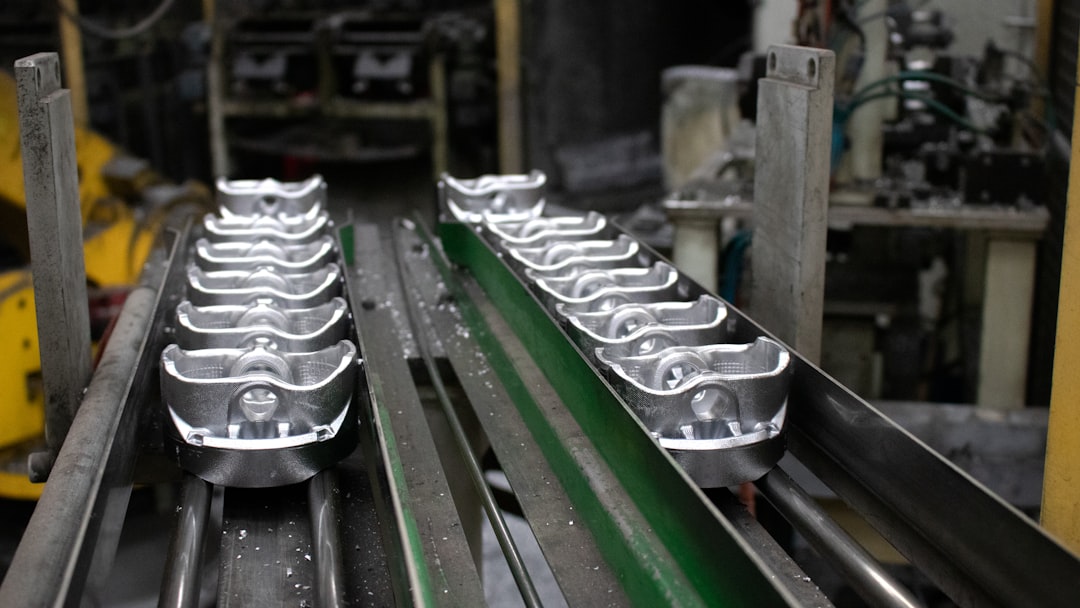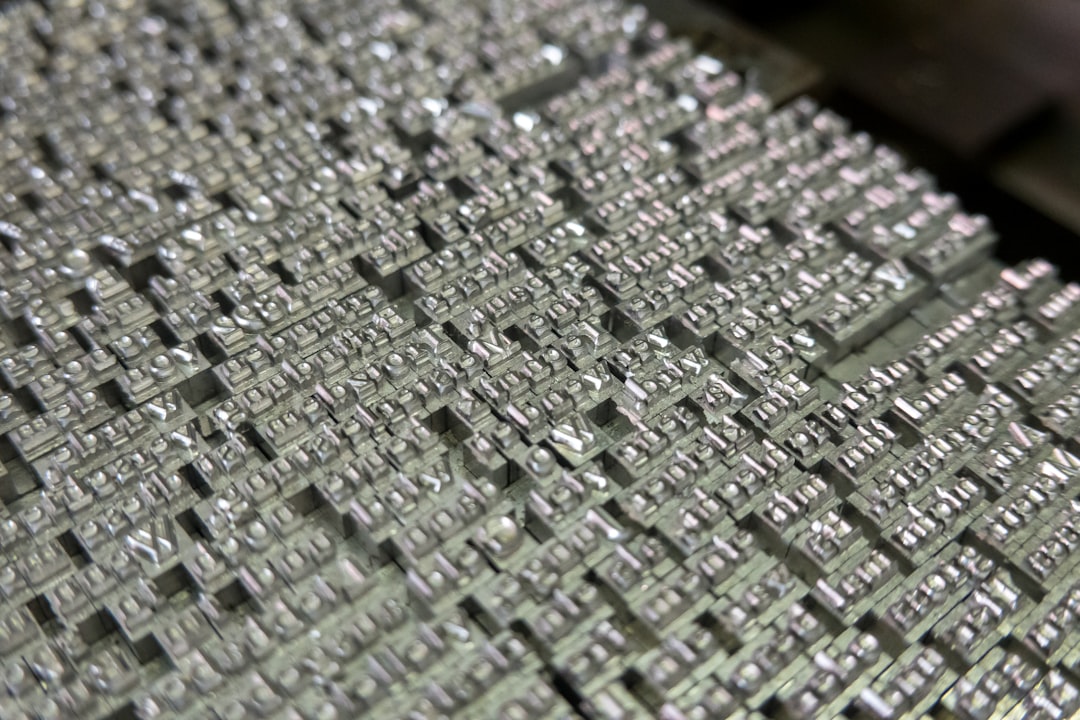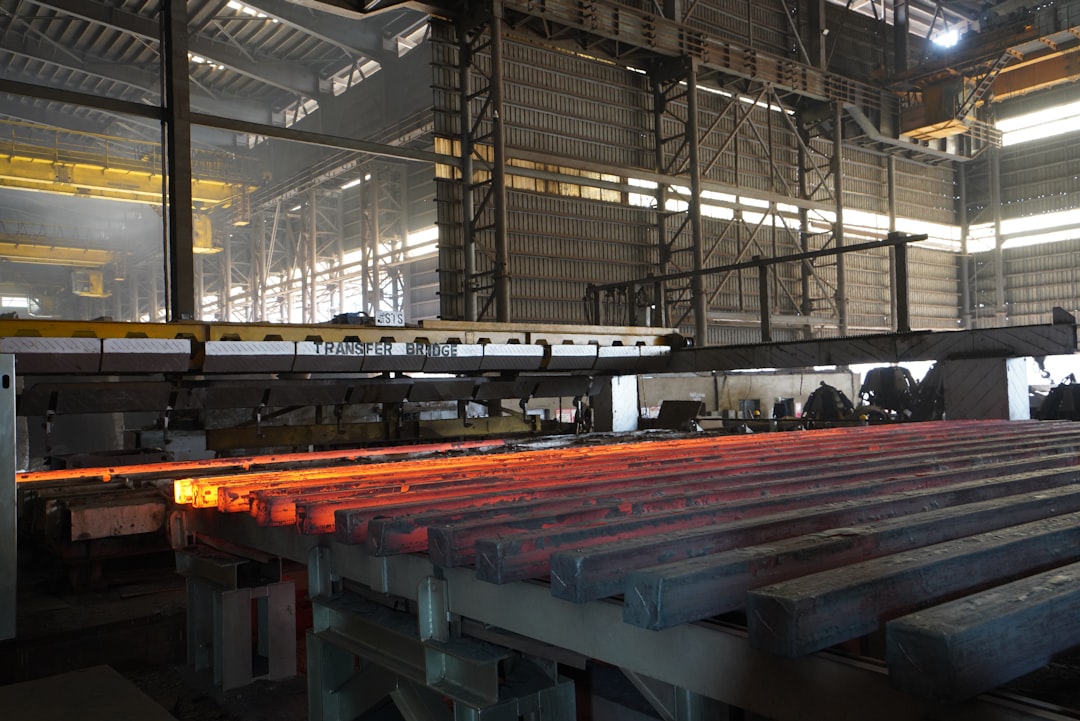

Engage prospects with a scan and streamline customer engagement with FREE QR code marketing tools by Sona – no strings attached!
Create a Free QR CodeFree consultation

No commitment

Engage prospects with a scan and streamline customer engagement with FREE QR code marketing tools by Sona – no strings attached!
Create a Free QR CodeFree consultation

No commitment
In today's digitally driven world, QR codes have evolved from a novelty to a strategic powerhouse in bridging offline engagement with online action. For sheet metal fabrication companies, QR codes represent a frictionless and effective way to drive customer engagement, provide instant access to technical specs or safety documentation, and streamline quoting, with no app download or complex setup required. Used well, they shorten the distance between interest and action, turning every physical interaction into a measurable digital touchpoint.
Increasingly, clients and partners expect real-time information, digital tracking, and seamless communication. One of the frequent frustrations faced by sheet metal fabrication companies is missing high-value prospects who interact physically but never submit a digital inquiry. QR codes provide a direct conduit to capture intent and boost engagement, whether replacing paper brochures, manual order forms, or cumbersome sign-up sheets. This makes it possible to gather clean data, follow up faster, and personalize the experience for every buyer role.
By connecting every touchpoint to digital workflows, QR technology helps avoid lost opportunities and brings greater visibility to customer behavior. It modernizes the buyer journey, strengthens brand credibility, and elevates the service experience, especially when paired with precise analytics and CRM integrations that convert scans into revenue-driving actions.

QR codes bridge the persistent gap between physical touchpoints and digital outcomes, a hurdle for many companies relying on analog processes that leave valuable leads untracked or delayed. In fabrication environments, manual quoting, in-person consultations, and paper-based work orders often result in missed prospects who never make it into your CRM. Without those signals, it becomes difficult to personalize follow-up, target high-fit accounts, sequence demos, or respond before a competitor does.
A structured plan turns QR codes into a growth system. Start by auditing analog bottlenecks, then link each physical asset to a specific digital action. Replace printed brochures with scannable project galleries, convert paper forms into mobile-optimized quote requests, and shift walk-in facility inquiries into tagged digital conversations. With a clear measurement plan, you can see which codes drive outcomes like faster quotes, more datasheet downloads, or higher repeat orders, then iterate with confidence.
For sheet metal fabrication companies looking to improve operational efficiency and decrease the risk of lost opportunities, this stepwise approach enables data-driven decision making and continuous improvement. It replaces outdated processes with scalable digital solutions and turns every on-site interaction into an actionable, measurable signal.

Many sheet metal fabrication companies struggle with a lack of visibility into who interacts with their assets, packaging, or facilities. A project engineer flips through a brochure, a purchasing manager unpacks a shipment, or a contractor reads safety signage, then the opportunity vanishes without a trace. High-potential leads remain anonymous, never making it past that initial physical encounter to an actionable sales conversation. QR codes directly address this gap by turning offline interest into digital signals you can track, segment, and act on.
The value multiplies when QR insights are connected to CRM and marketing workflows. Each scan can identify role intent, asset performance, and timing, giving sales and operations a clear picture of what a buyer needs next. This moves teams from reactive to proactive, and it supports faster quoting, richer technical support, and more confident decision making across the customer journey.
Common materials that benefit include packing slips, part tags, compliance posters, brochures, plant tour badges, truck decals, and appointment cards. With a code on each, these assets evolve from static print to interactive, measurable touchpoints that feed revenue strategy.

Identifying which interactions generate the highest-value leads has long challenged fabrication marketers. QR code formats add flexibility to static materials, ensuring the right information is one scan away. Selecting the correct format for each use case makes the destination intuitive and the next step obvious.
For fabrication, the most valuable formats are those that enable immediate quoting, technical validation, and post-sale support. When combined with dynamic capabilities and campaign tags, they create a feedback loop between the shop floor and the sales pipeline.
Dynamic QR codes excel in fast-changing industrial contexts where destinations need updating or data capture is essential. Static codes are appropriate for fixed endpoints such as a permanent safety manual or a general contact page. Platforms like Sona QR allow both types to be managed centrally so you can balance stability and agility in your deployment.

Sheet metal fabrication companies often struggle to engage and retain prospects who interact at physical touchpoints but remain untracked or are pursued too late. Embedding QR codes at the right moments turns those anonymous interactions into growth levers and gives teams data to prioritize high-intent opportunities.
Start with the surfaces you already control. Every shipment, invoice, or facility sign can guide a customer to a next step that aligns with your goals, whether that is quoting, documentation, or feedback. Over time, analyze scan hotspots to identify which placements generate the most valuable actions.
Each placement should have a clear promise and an outcome that matters to the recipient. A good rule of thumb is to make the benefit specific such as Scan for your heat treat cert or Scan for a 2-hour quote turnaround.

Fragmented or generic follow-up has long undermined customer retention and repeat business in fabrication. QR-driven workflows make personalization and timely engagement possible even in complex, low-tech, or regulated environments. The following use cases align with common customer interactions and produce measurable outcomes when paired with proper tracking.
The best implementations keep the action singular and context-aware. A part tag should route to a datasheet, a trade show poster should open a one-minute quote form, and a delivery label should launch a warranty registration. Single-purpose scans reduce confusion and lift conversion rates.
Each QR code scan is a signal. It captures intent, context, and timing that websites alone cannot provide. By deploying unique QR codes across physical touchpoints, you can automatically segment audiences based on behavior and use that data to fuel precise retargeting and follow-up campaigns that reflect real-world needs. See Intent-Driven Retargeting.
In fabrication, roles and motivations vary widely. Engineers want specs and tolerances, procurement cares about price and lead time, and operators focus on safety and uptime. Assigning QR codes to role-specific assets makes those distinctions visible and actionable.
This approach transforms physical engagement into audience intelligence. It reduces wasted ad spend and improves relevance by aligning content with what the scanner actually needs, not what a generic persona might need.
The fragmented nature of traditional marketing in sheet metal fabrication, spread across print, in-person, and digital, often creates gaps in visibility and attribution. QR codes connect those channels by converting offline interactions into trackable digital actions with offline attribution. They allow you to see which brochures, shipments, and events drive engagement and how those touches influence pipeline movement.
When QR codes are managed centrally, every scan enriches your marketing database. This enables better budgeting, smarter creative testing, and faster iteration across the entire go-to-market engine. It also ensures that operations and sales teams see the same data and can align on follow-up priorities.
QR codes serve as the offline onramp to your digital marketing engine. With a platform like Sona QR, you can manage codes at scale, monitor performance, and sync scan activity to your CRM and ad platforms, turning once-invisible interactions into measurable momentum.
A clear execution plan ensures your QR rollout drives measurable outcomes rather than scattered experiments. Treat each deployment like a mini-campaign with a defined purpose, a specific destination, and a measurement framework. Start small, test quickly, and scale what works.
Make sure each step includes input from marketing, sales, and operations. The best QR programs align around moments of truth across the buyer journey such as quote intake, spec confirmation, and post-delivery support. Build toward an integrated system rather than a collection of isolated codes.
Define a single business goal and match it to a physical context. Common goals include speeding up quote requests at trade shows, simplifying access to compliance documents on-site, or driving warranty registrations after delivery. The clearer the goal, the easier it is to craft a call to action that compels scanning.
Document the target audience, success metric, and destination experience. For example, at a regional expo the use case might be visitor-to-quote conversion, with the destination being a two-minute mobile quote form and the metric being completed submissions per day. Assign ownership for creative, placement, and follow-up.
Select static or dynamic based on flexibility and measurement needs. Static codes make sense for permanent resources such as a general safety manual; dynamic codes are essential when you want to edit destinations, track scans, segment audiences, and run A/B tests without reprinting. Most campaign use cases benefit from dynamic codes.
Choose the format that supports your action. For quoting and documentation, web links to mobile-optimized pages are ideal. For rapid service communication, SMS or email actions reduce friction. For contact exchange, vCards keep your team top-of-mind. Generate and manage these codes in a centralized platform like Sona QR to ensure governance and consistency.
Design for scannability first. Use adequate size for the scanning distance, strong contrast, and a quiet zone around the code. Add a frame or branded mark to draw attention, and place a clear call to action such as Scan for CAD files or Scan for a 2-hour quote. Avoid clutter around the code that competes for attention.
Test across real devices, lighting, and surfaces, and plan to print on metal where durability matters. Validate on iOS and Android, from different angles, and on curved or textured materials commonly found in shops. Print a small batch and test in situ on machinery, crates, or signage to ensure reliable scans under real conditions. Iterate on design if completion rates lag.
Prioritize placements where missed or anonymous interactions hurt most. In fabrication, that often means trade show assets, shipping labels, invoices, equipment signs, and training materials. Give each placement a unique code so you can attribute performance accurately and invest in winners.
Prepare your team to support the deployment. Coach booth staff to promote scanning with a short pitch, train front-office staff to reference the codes on paperwork, and ensure operators know where to find safety and maintenance resources via QR. Consistency across staff touchpoints increases scan volume and conversion quality.
Define your measurement cadence and dashboards. Track scans over time, by asset, and by location. Layer in conversion metrics such as quote completion rate, documentation downloads, and support tickets resolved. Use these insights to adjust CTAs, reposition codes, and refine destinations for clarity and speed.
Run controlled tests on high-traffic codes. Experiment with alternative CTAs, landing page headlines, or content modules such as including a one-minute video before a quote form. Use platforms like Sona QR to compare performance in real time and push winning variants live without reprinting.
Leadership in sheet metal fabrication often lacks end-to-end visibility from offline engagement to closed revenue. It is common to know that brochures were handed out or shipments were delivered but unclear which of those touches influenced a quote, an upsell, or a renewal. QR analytics close this gap by capturing scan context and tying it to downstream behavior.
Analytics matter because they help you move from counts to consequences. Knowing that a code was scanned is a start, but knowing that a specific code on a packing slip led to a warranty registration, a service plan purchase, and a reorder is what drives strategy. When scan data is unified with CRM and ERP records, it becomes the backbone of performance marketing and revenue attribution.
Advanced platforms such as Sona QR and Sona.com make it possible to unify fragmented touchpoints across buying stages. They enrich identities over time, connect QR scans with website visits and ad clicks, and produce a coherent buyer journey that links first scan to purchase readiness.
QR code programs fail when details are ignored. Poor placement, weak calls to action, or slow destinations will suppress scan rates and conversions. To maximize effectiveness, approach QR like any performance channel: set a goal, design for intent, and optimize based on data.
Role-specific value propositions are essential. Engineers respond to specs and CAD access, procurement responds to price and lead time, and operators respond to safety and uptime. Tailor each code’s promise and destination to the role most likely to scan in that context, and your results will climb.
Creative deployment examples include QR codes on tool sign-out sheets that open short safety refreshers and QR codes on invoices that link to a prefilled reorder form for commonly purchased parts. These placements turn routine interactions into measurable micro-conversions.
Industry leaders are deploying QR codes strategically to capture more leads, validate intent, and surface service opportunities that would otherwise be missed. The strongest ideas align the scan with an immediate benefit and a clear next step, then measure performance to refine the experience.
Look for inspiration in your own workflows. Anywhere a customer reaches for paper, makes a phone call, or waits for email is a candidate for QR acceleration. The key is to reduce steps without sacrificing context or quality.
Each example benefits from dynamic QR management so content stays fresh and analytics remain intact. As patterns emerge, double down on high performers and sunset underused placements.
Even savvy marketers and operations leaders can trip on basics when rolling out QR programs. The most common pitfall is poor placement such as codes on glossy curved surfaces with glare, or too close to the floor where scanning is awkward. The second is vague or uninspiring destinations that do not deliver immediate value, which erodes trust and suppresses future scans.
Analytics must be living, not shelfware. Schedule regular reviews to spot underperforming codes, compare CTAs, and test alternate landing pages. If plant tour guides, drivers, or field reps do not understand the role of QR codes, prime moments for engagement will be missed. A quick briefing and simple talking points dramatically improve adoption.
To avoid these issues, design with the physical environment in mind. Match code size to distance, ensure high contrast, and place at natural eye level near the decision point. Pair each code with a benefit-driven CTA and keep destinations fast, mobile-friendly, and role-specific. Finally, make optimization a habit. Small tweaks, applied consistently, compound into significant gains.
QR codes are more than a shortcut. They are a strategy. In the context of sheet metal fabrication, they turn every piece of physical real estate, from part tags and shipping labels to compliance posters and booth walls, into a digital entry point. This shift addresses the persistent frustration of missing high-value prospects and links offline interest to timely, personalized follow-up.
QR codes deliver:
A thoughtful QR strategy, supported by dynamic code management, real-time tracking, and CRM integration, converts analog moments into measurable growth. Companies that adopt this approach strengthen brand reputation, accelerate sales cycles, and deliver a more responsive service experience. With Sona QR, you can generate and track your first codes in minutes, then use Sona.com to connect scans to pipeline and revenue. Start creating QR codes for free.
QR codes have revolutionized sheet metal fabrication companies by transforming traditional access methods into streamlined, efficient workflows. Whether it’s enabling instant access to technical specifications, improving inventory management, or facilitating seamless communication between teams, QR codes replace cumbersome manual tracking with fast, mobile-friendly solutions that enhance operational accuracy and speed. Imagine instantly retrieving critical fabrication details on-site or effortlessly monitoring project progress in real time—these are the game-changing advantages QR codes bring.
With Sona QR, you can create dynamic, trackable QR codes in seconds, update information instantly without costly reprints, and connect every scan to actionable insights that optimize your fabrication processes. No more lost time or miscommunication—just smarter, more responsive operations that drive productivity and quality. Start for free with Sona QR today and unlock the full potential of QR technology to elevate your sheet metal fabrication workflows.
Sheet metal fabrication companies typically provide services such as custom metal part manufacturing, technical datasheet access, quoting, post-delivery support, and compliance documentation.
Choose a company that offers streamlined quoting, real-time digital tracking, seamless communication, and uses technologies like QR codes to provide instant access to specs and support.
The latest trends include the use of dynamic QR codes for digital engagement, real-time analytics integration, CRM-connected workflows, and mobile-optimized digital quoting and support systems.
QR codes enable instant access to technical specs, streamline quoting, enhance customer engagement, track offline interactions digitally, reduce lost leads, and connect physical touchpoints to online workflows.
Ensure quality by accessing up-to-date compliance certifications, technical datasheets, and safety documentation through QR codes, and by choosing companies that provide traceable and dynamic digital support.
Use Sona QR's trackable codes to improve customer acquisition and engagement today.
Create Your FREE Trackable QR Code in SecondsJoin results-focused teams combining Sona Platform automation with advanced Google Ads strategies to scale lead generation

Connect your existing CRM

Free Account Enrichment

No setup fees
No commitment required

Free consultation

Get a custom Google Ads roadmap for your business






Launch campaigns that generate qualified leads in 30 days or less.
